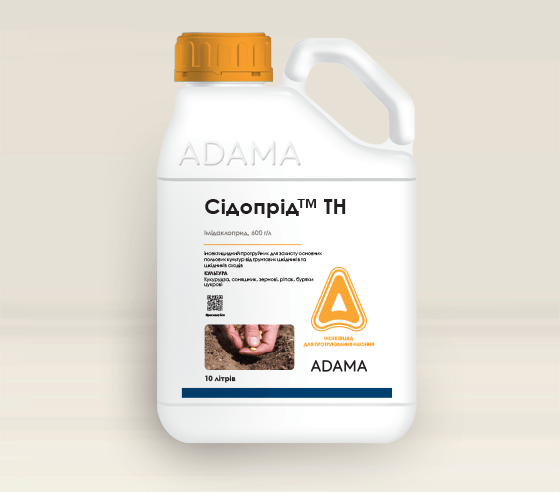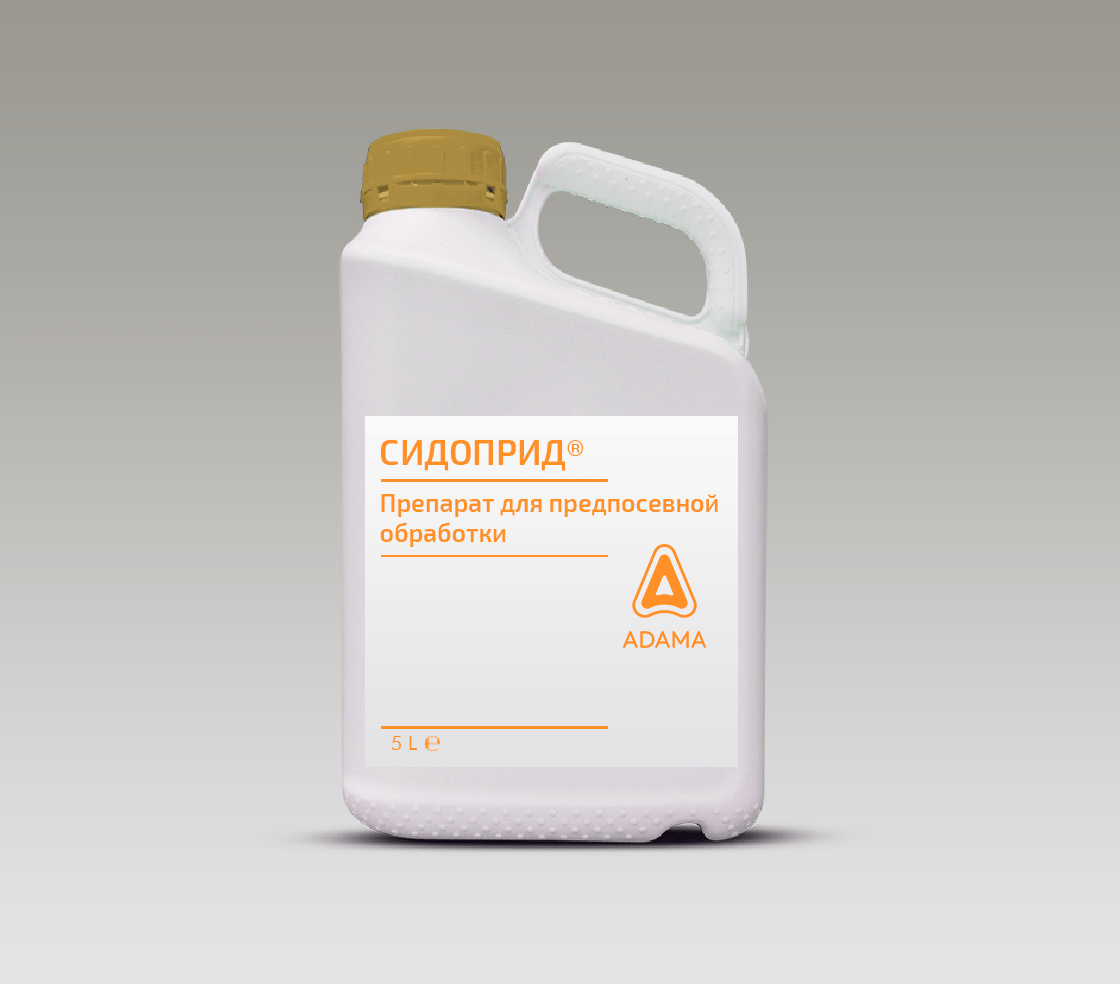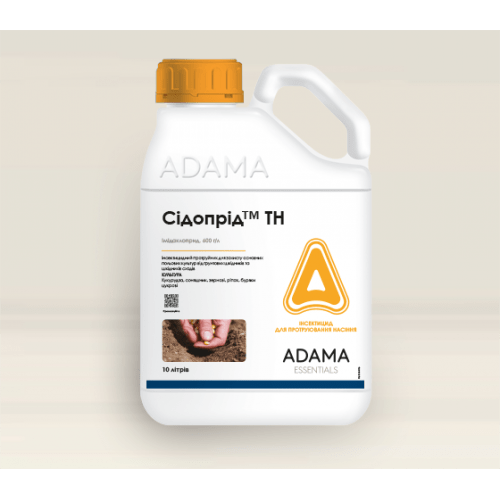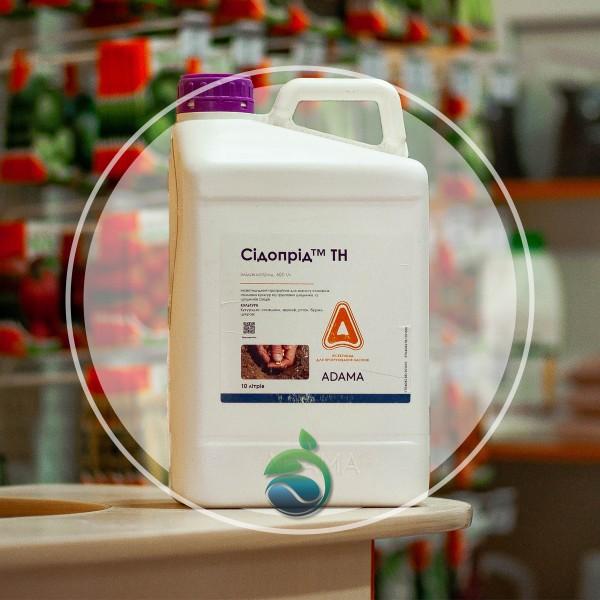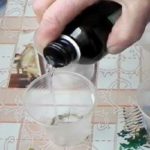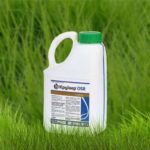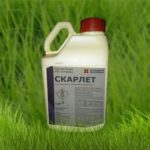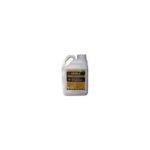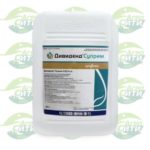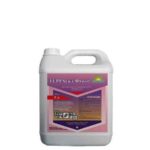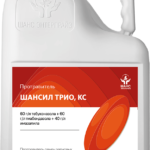Treating seeds with insecticides allows them to be disinfected before sowing and reduces the possibility of their damage by pests. Let's consider the purpose and effect of "Sidopride", the composition and formulation of the disinfectant, the rules for its use, the rate of use and consumption according to the instructions, and safety measures during work. What can the drug be combined with, how and for how long can it be stored, and what can it be replaced with.
Composition and preparative form of the drug "Sidopride"
Sidoprid is produced by Adama Rus LLC in the form of a flowable suspension, produced in 5 liter canisters. The insecticide has intestinal and contact action. The active substance is imidacloprid in the amount of 600 g per 1 liter.
Mechanism of operation and purpose of the product
Systemic protectant "Sidoprid" is intended for use in agriculture. It is used to prevent damage by wireworms to corn and sunflower, rapeseed by cruciferous flea beetles, wheat and barley by intrastem flies and bread flea beetles, and winter wheat by bread ground beetles.
Imidacloprid acts on pests during their contact with seeds treated with Sidopride.
Insects also die after eating seedlings and underground parts of plants, since the product also has an intestinal effect. A few hours are enough for death to occur; the time varies depending on the consumption of the product, the type of pest and the stage of development of the crop. The product works effectively in any weather conditions and any soil moisture.
Rules for using the disinfectant
Application rates according to instructions for various crops (in l per t):
- wheat, barley – 0.5;
- corn, rapeseed – 4;
- sunflower – 5-6.
Seeds are treated once before sowing or in advance; treatment is allowed within a year before sowing. Liquid consumption for wheat and barley is 10 liters per ton of seeds, for corn and rapeseed – 15 liters, for sunflower – 16 liters. There is no waiting period. The protective period lasts up to 28 days.
To treat with a disinfectant, it is necessary to select clean, free from impurities seeds, and during processing, make sure that the solution covers them evenly.After this, they must be dried to a free-flowing state.
Precautions when working with the drug
"Sidopride" does not cause plant poisoning when used in the dosage recommended by the manufacturer. The insecticide should not be used near fish farms. It is not used for seed treatment and in private household plots.
The disinfectant belongs to products with hazard class 2 for humans. When working with this rather dangerous drug, you need to wear gloves, goggles and a respirator. Process the shift in protective clothing that would protect the skin from contact with the solution. While the treatment is ongoing, clothing and protective equipment cannot be removed. Do not smoke, drink or eat to prevent the insecticide solution from getting into your mouth.
If liquid gets on your body, remove it with cotton wool, then rinse the area with clean water. In case of contact with eyes, also rinse them with water. If the solution accidentally gets inside, rinse the stomach: drink 1 liter of water and 6-7 tablets of activated carbon, then induce vomiting. Treatment of “Sidopride” poisoning is symptomatic; no antidotes have been identified.
Compatibility with other substances
"Sidopride" can be combined with fungicides, but before mixing it is necessary to check the drugs for compatibility. When preparing the mixture, first add Sinopride, then other pesticides. The simultaneous use of disinfectants with insecticidal and fungicidal effects enhances the overall effect and makes it possible to more reliably protect seeds from both pests and diseases.
Storage conditions and periods
The disinfectant "Sidoprid" is stored for 2 years in warehouses for storing pesticides and fertilizers. It should be stored at moderate temperatures, in darkness and dryness.Store only in original packaging, in closed canisters. You can keep other agricultural products and fertilizer mixtures near the pesticide; you cannot put food, medicines and household products. Animals and children must not be allowed into the warehouse.
After the expiration of the storage period, the Sidoprid disinfectant must be thrown away and purchased a new one, since its effectiveness is greatly reduced. The product solution prepared for treating seeds should be used on the day of preparation. Then its effectiveness also decreases.
Analogs
“Sidoprid” can be replaced with such products as: “Initer 600”, “Nuprid”, “Commander”, “Gaucho”, “Contador Maxi”. They contain the same active substance or other active substances with a similar effect. Dressing agents are used to treat seeds of various crops in agriculture.
"Sidopride" shows pronounced effectiveness against pests that live in the soil and can damage seeds, seedlings and young plants. Reliably protects plant roots from damage in the early period of development. Works in any climatic conditions. Has contact and systemic effects. The long-term protective effect of the treatment makes it possible to reduce the number of subsequent plant treatments.
The drug "Sidopride" is convenient to use; the solution for dressing can be diluted with other pesticides. Destroys pests that are resistant to many insecticides. It dissolves well in water, the solution adheres well to the seeds and does not crumble when dried. It is permissible to process the seeds in advance; this does not change the effectiveness of the product. The disadvantage of this product is that it cannot be used on private farms.

